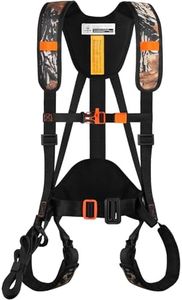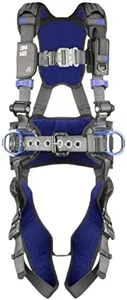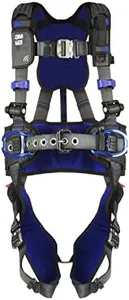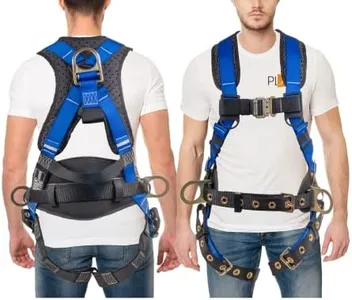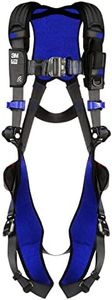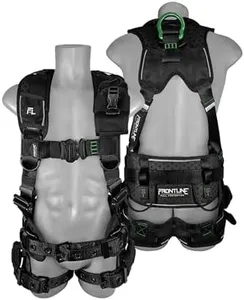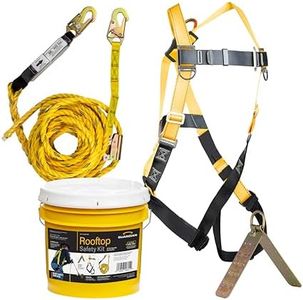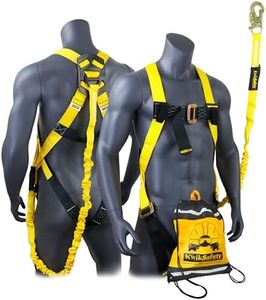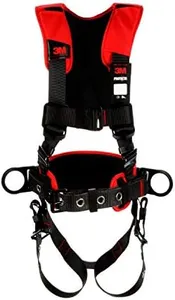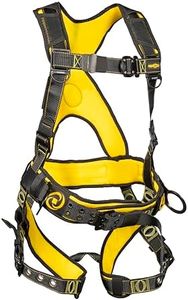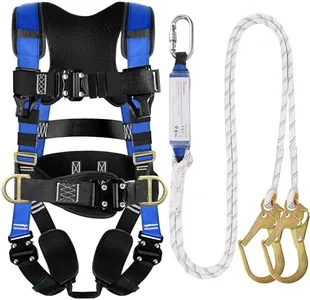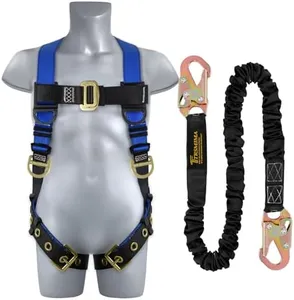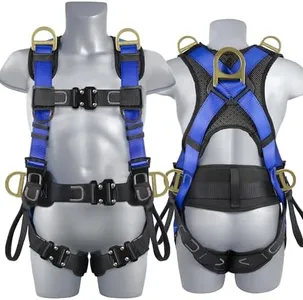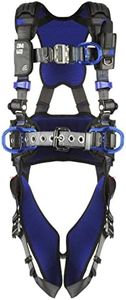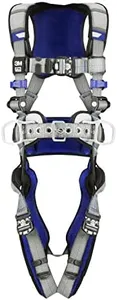10 Best Safety Harnesses 2025 in the United States
Our technology thoroughly searches through the online shopping world, reviewing hundreds of sites. We then process and analyze this information, updating in real-time to bring you the latest top-rated products. This way, you always get the best and most current options available.

Our Top Picks
3M 1113124 DBI-SALA ExoFit X300 Comfort Construction Positioning Safety Harness, Construction Fall Protection, Aluminum Back and Hip D-Rings, Auto-Locking Quick Connect Leg and Chest Buckles, Medium
Most important from
729 reviews
The 3M 1113124 DBI-SALA ExoFit X300 Comfort Construction Positioning Safety Harness is designed primarily for professional use in construction and other industrial environments. One of its standout features is the comfort padding, which is lightweight, breathable, and moisture-wicking. This design helps to provide enhanced comfort, particularly during long periods of wear. It also boasts auto-locking quick-connect buckles which make it easy to secure the straps without repeated adjustments, a practical aspect for workers needing to put on and take off the harness quickly.
The harness includes both back and hip D-rings, offering flexibility for positioning and providing lumbar support, which can be particularly beneficial for users carrying tools or working at height. Additionally, the integrated trauma straps provide a safety measure in the event of a fall, addressing concerns about suspension trauma.
There are some considerations to keep in mind. The harness is designed for industrial or occupational use only, meaning it may not be suitable for casual users or consumers looking for a general-purpose safety harness. The care instructions specify hand washing, which could be a drawback for users seeking low-maintenance options. While some users may find it on the heavier side at 4.5 pounds, especially when worn for extended periods.
Most important from
729 reviews
3M 1403100 DBI-SALA Comfort Construction Weight Distribution Positioning Safety Harness, OSHA, ANSI, Back and Hip D-Rings, Anti-Sliding Dorsal D-Ring, Auto-Lock Quick-Connect Leg Buckle, Large
The 3M 1403100 DBI-SALA Comfort Construction Weight Distribution Positioning Safety Harness is designed for those needing reliable fall protection in construction or industrial environments. One of its standout features is the weight distribution system, which effectively shifts weight from the shoulders to the hips, helping to reduce fatigue during long hours of use. This makes it particularly beneficial for workers who are on the job for extended periods, as it aims to enhance comfort without sacrificing safety. The auto-locking quick-connect leg and chest buckles streamline the process of putting on and taking off the harness, which is a huge plus for efficiency and ease of use.
The harness also incorporates multiple D-rings, including a unique anti-slide dorsal D-ring, facilitating quick and secure connections to lanyards or other safety equipment. This feature enhances usability and makes it easier to attach to various systems, ensuring greater safety while working at height.
However, there are a couple of considerations to keep in mind. While the harness is adjustable, some users may find the sizing options somewhat limited, particularly if they fall outside the 'Large' range. Additionally, although the auto-locking mechanism is convenient, it may require some getting used to for those unfamiliar with this style of harness. In terms of certification, the 3M harness meets OSHA and ANSI standards, providing peace of mind regarding its reliability and safety compliance. The materials used, including polyester and zinc-plated steel, contribute to the harness's durability, although users should be aware of proper care to maintain its longevity.
This harness is ideal for construction workers, electricians, or anyone working at heights who values both comfort and security in their safety gear. It successfully blends usability, comfort, and safety, making it a solid choice for professionals in demanding environments.
Buying Guide for the Best Safety Harnesses
Choosing the right safety harness is crucial for ensuring your safety while working at heights. A safety harness is a form of protective equipment designed to prevent falls and minimize injury in case of a fall. When selecting a safety harness, it's important to consider various specifications to ensure it meets your specific needs and provides the best protection. Here are the key specifications to look for and how to choose the right one for you.FAQ
Most Popular Categories Right Now
